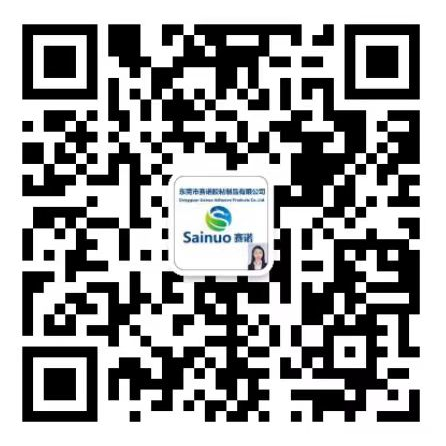방수 접착 필름으로 라벨 내구성 향상시키기
방수 접착 필름용 필수 소재
합성 필름: 폴리에스터와 폴리프로필렌
합성 필름의 경우, 폴리에스터와 폴리프로필렌이 대표적인 선택지로 꼽히는데, 이는 습기와 화학물질에 강한 저항성을 보여주기 때문입니다. 따라서 방수 접착제 분야에서는 이들 소재가 훌륭한 선택이 됩니다. 폴리에스터는 기존의 전통적인 필름들이 제공하기 어려운 뛰어난 강도와 유연성의 조합을 가지고 있습니다. 산업계 자료에 따르면 폴리에스터는 영하 65도 화씨에서 최고 200도 화씨까지의 온도를 견딜 수 있어 그 내구성이 매우 우수함을 알 수 있습니다. 폴리프로필렌 역시 습기 저항성에서는 거의 뒤지지 않지만, 내구성 면에서는 폴리에스터에 다소 미치지 못합니다. 이러한 소재들은 특히 거친 환경에서도 견뎌야 하는 방수 스티커 제작에 중요한 역할을 합니다. 비가 오나 눈이 오나 자연이 던지는 갖가지 악조건 속에서도 살아남아야 하는, 옥외 간판이나 산업용 라벨을 상상해보면 됩니다.
이러한 합성 필름은 실제로 친환경 측면에서 두드러집니다. 폴리에스터와 폴리프로필렌은 모두 재활용이 가능하여 쓰레기 축적을 줄이고 환경에 대한 피해를 감소시키는 데 기여합니다. 환경을 파괴하지 않는 제품에 대한 수요가 점점 더 증가하고 있기 때문에 이러한 특성은 이 소재를 상당히 매력적으로 만듭니다. 이 소재를 특히 가치 있게 만드는 것은 내구성이 뛰어나고 손상에 강하면서도 일부 환경 문제 해결에 기여할 수 있다는 점입니다. 이를 사용하는 기업들은 환경적 측면과 실용적 측면 모두에서 최고의 이점을 얻을 수 있습니다.
투명 스티커 용지 vs 광동 스티커 용지 선택
다양한 용도에 따라 적절한 스티커 용지를 선택하는 것이 매우 중요합니다. 투명 스티커 용지는 아래에 있는 것을 그대로 드러나게 하므로 표면 위의 라벨이 거의 보이지 않는 것처럼 만들 수 있습니다. 이는 많은 사람들이 특정 프로젝트에서 원하는 깔끔하고 방해되지 않는 효과를 제공합니다. 반면, 광택 스티커 용지는 색상을 한층 돋보이게 하는 매끄럽고 반짝이는 외관을 제공합니다. 브랜드는 일반적인 스티커보다 로고와 디자인이 주목할 수 있도록 만들어 이러한 옵션을 자주 선택합니다. 차이점이 단지 외관상의 문제가 아니라, 빛이 이 소재에서 반사되는 방식에 따라 정보가 두드러지는 정도가 배치된 위치에 따라 달라질 수 있습니다.
마지막에 어떻게 보이는지는 그 물건이 오래 사용할 수 있는지, 물에 얼마나 잘 견디는지를 결정하는 데 매우 중요하다. 광택지에는 일반적으로 라미네이트 코팅이 적용되어 있어 습기나 오염으로부터 추가 보호 기능을 제공하므로, 프레젠테이션에서 세부적인 그래픽을 표현할 때 훌륭한 선택이 된다. 소재 전문가들은 투명 스티커 용지를, 창문이나 유리 디스플레이에 라벨을 붙일 때처럼 시야를 방해하지 않아야 하는 상황에 적합하다고 추천한다. 광택 처리된 소재는 특히 색감이 강하게 드러나야 하거나 내구성이 중요한 경우에 더욱 효과적이며, 자주 사용하더라도 오랫동안 좋은 상태를 유지해야 하는 제품에 적합하다.
간편한 시공을 위한 자가接着 필름
자기 접착 필름은 기존 스티커가 갖지 못한 편리함을 제공합니다. 이러한 필름을 적용할 때는 별도의 접착제나 점착 물질이 필요하지 않아 라벨 부착에 소요되는 시간을 줄일 수 있습니다. 단순히 백킹지를 떼어낸 후 원하는 위치에 눌러붙이기만 하면 됩니다. 이는 특히 매일 수백 개 또는 수천 개의 물품에 라벨을 부착해야 하는 대규모 작업에서 작업자들이 시간을 절약할 수 있도록 해줍니다. 많은 공장들이 생산 라인에 있어 자가 접착 필름이 훨씬 더 효과적임에 따라 이러한 필름으로 전환하고 있습니다.
자기 접착 필름은 일반적으로 다양한 제품 간에 품질과 성능 수준이 일관되도록 설계된 특정 산업 표준을 충족한다. 예를 들어 제조사가 승인을 받기 전에 통과해야 하는 테스트 요구사항을 살펴보자. 이러한 테스트에서는 온도 변화, 습기 및 접착 강도에 영향을 줄 수 있는 기타 환경 요인에 노출되었을 때 접착제가 얼마나 잘 견디는지를 확인한다. 통제된 환경에서 수행된 연구에 따르면, 기존 방식에 비해 자기 접착 솔루션으로 전환할 경우 사용 편의성 지표를 약 30% 향상시킬 수 있다. 따라서 건설 회사, 자동차 제조사, 의료기기 제조업체조차도 이러한 소재를 점점 더 많이 사용하는 이유가 명확하다. 대규모 프로젝트나 혹독한 현장 조건에서 작업할 때 복잡한 적용 과정 없이 신뢰성 있게 접착되는 제품이 필요하기 때문이다.
내구성을 향상시키는 접착 기술
아크릴 vs. 핫멜트 접착제
더욱 오래 지속되는 라벨에 적합한 접착제를 선택하려면 아크릴계 접착제와 핫멜트계 접착제의 차이를 이해하는 것이 중요합니다. 아크릴계 접착제는 표면에 단단히 밀착되어 수분 저항성이 필요한 용도에 탁월합니다. 또한 온도 변화가 심한 환경에서도 접착력이 저하되지 않는 특성이 있습니다. 핫멜트 접착제 역시 강력한 접착력을 제공하지만, 온도 변화가 크지 않은 안정적인 환경에서 가장 우수한 성능을 발휘합니다. 업계 전문가들은 일반적으로 BOPP 라벨의 경우 아크릴 접착제가 습기와 이슬에 강해 보다 오래 붙어 있는 것으로 알려져 있습니다. 반면 핫멜트 접착제는 대부분의 사무실이나 창고 환경처럼 건조하고 예측 가능한 조건에서는 충분히 좋은 성능을 보입니다.
극한 조건에 맞는 적절한 접착제 선택하기
험한 환경 조건에서 접착제를 올바르게 선택하려면 먼저 고려해야 할 몇 가지 핵심 요소가 있습니다. 바로 온도 범위, 습도 수준, 주변에 존재할 수 있는 화학 물질입니다. 야외나 식품 생산 환경에서 사용되는 제품의 경우, 이러한 접착제는 다양한 기후 변화와 습기를 견뎌내면서도 여전히 충분한 접착력을 유지해야 합니다. 아크릴 계열의 제품은 습한 환경에서 우수한 성능을 발휘하며, 극저온 상황에서도 사용할 수 있는 특수 제형도 존재합니다. 제조사들의 테스트를 통해 고품질의 방수 접착제는 혹독한 환경 조건에 직면하더라도 접착 상태를 유지한다는 사실이 밝혀졌습니다. 이는 제품이 습한 창고에 보관되거나 운송 중 영하의 온도에 노출되더라도 그 성능이 그대로 유지된다는 의미입니다.
방수 라벨의 환경 저항성
물 및 습기 보호
방수 라벨은 물과 습기에 대해 상당히 우수한 성능을 발휘하여, 환경이 축축해져도 오래 견딥니다. 이러한 라벨들은 일반적으로 물기를 밀어내는 특수 소재로 만들어지며, 대체로 방수 접착제와 수분을 잘 흡수하지 않는 표면 소재로 구성됩니다. 현장에서 여러 번 검증한 결과, 이러한 라벨이 고습 조건에서도 정보가 손상되지 않고 견고하게 유지된다는 사실이 입증되었습니다. 예를 들어 요즘 많은 기업들이 사용하는 견고한 자가 접착 필름 라벨이 있습니다. 이 라벨은 업계 표준에 맞는 다양한 엄격한 시험을 통과했으며, 일반 라벨에 비해 습기로부터 보호하는 성능이 일관되게 우수합니다. 기업이 이러한 방수 솔루션으로 전환하면, 물기가 문제되는 환경에서도 제품 정보가 오랫동안 손상되지 않아 장기적으로 시간과 비용을 절약할 수 있습니다.
열 및 자외선 저항
라벨이 옥외에서 오래 사용되기 위해서는 열과 자외선에 견딜 수 있어야 합니다. 충분한 자외선 보호가 되지 않으면 라벨은 시간이 지남에 따라 햇빛 아래서 색이 바래고 읽기 어려워지며 낡아 보이게 됩니다. 접착제 소재에 대한 연구에 따르면 극한 조건에 맞게 설계된 특정 접착제는 온도 변화가 크더라도 떨어지거나 분해되지 않고 견고하게 붙어 있는 것으로 나타났습니다. 이러한 접착제가 혹독한 환경을 얼마나 잘 견디는지 확인하는 방법도 다양합니다. 가속 노후화 시험은 실험실 환경에서 수년간의 노출 효과를 시뮬레이션하여 제조업체가 제품을 출시하기 전에 가장 효과적인 것을 파악할 수 있도록 해줍니다. 고품질의 자외선 및 열 저항성 라벨에 투자하는 기업들은 이후에 발생할 수 있는 문제를 줄일 수 있습니다. 이들 제품은 외부에서 수개월이 지나도 여전히 깔끔한 외관을 유지하여 브랜드 이미지와 고객 만족도에 긍정적인 영향을 미칩니다.
마모 및 화학적 내구성
방수 라벨도 거친 환경에 노출되면 오래 견디지 못합니다. 라벨이 자주 마모되거나 표면에 계속해서 문지르는 환경에서는, 여전히 글씨가 읽히는 상태를 유지할 수 있을 만큼 튼튼한 소재로 제작되어야 합니다. 또 하나의 큰 문제는 화학물질입니다. 이러한 작은 태그는 특히 제약 공장이나 자동차 공장과 같이 다양한 화학물질이 떠다니는 환경에서 여러 종류의 물질과 접촉하게 됩니다. 대부분의 전문가들은 표면에 보호층이 있는 라벨을 선택할 것을 권장합니다. 이 추가 보호층은 스크래치나 성가신 표면 마모를 방지하고, 화학물질이 라벨 소재를 파괴하는 것을 막아줍니다. 하지만 올바른 코팅을 선택하는 일은 단순한 추측이 아닙니다. 라벨이 매일 접하게 될 구체적인 화학물질을 정확히 알고 있어야, 라벨이 제 기능을 하지 못하거나 예정보다 일찍 손상되지 않도록 할 수 있습니다.
내구성이 우수한 방수 라벨의 산업 응용
식품 및 음료: 습기와 추위에 견디기
식품 및 음료 산업에서는 소비자의 안전과 제품의 상태를 유지하기 위해 다양한 규제를 충족하는 라벨이 필요합니다. 여기서 방수 라벨은 특히 중요합니다. 이러한 라벨은 습기를 견뎌내며 냉장고나 냉동고에 보관되는 제품처럼 차가운 환경에서도 떨어지지 않고 그대로 유지되기 때문입니다. 일부 연구에 따르면 내구성이 뛰어난 방수 라벨을 사용하는 기업은 라벨이 젖어도 번지거나 떨어지지 않기 때문에 제품의 변질이 적은 것으로 나타났습니다. 유명 브랜드 중에는 이러한 특수 라벨을 포장 라인에 도입하기 시작한 사례도 있습니다. 결과는 매장 진열대에서 더 오래 보관할 수 있는 제품과 소비자들 사이에서 향상된 품질 인식입니다. 따라서 방수 스티커 용지와 자체 접착 필름이 업계 전반에서 계속 인기를 끌고 있는 것도 놀라운 일이 아닙니다.
화장품: 미적 가치와 기능성의 결합
화장품 라벨은 다양한 환경적 도전을 견뎌내면서도 여전히 소비자의 눈길을 끌 만큼 좋은 상태를 유지해야 한다. 요즘에는 일반 스티커가 습도로 인한 수분이나 쇼핑 중 피할 수 없는 커피 흘림으로 인해 색이 바라지거나 벗겨지는 경우가 많기 때문에 점점 더 많은 뷰티 브랜드들이 방수 라벨을 선택하고 있다. 라벨이 오랫동안 선명함을 유지하면 브랜드 인지도 향상에 큰 도움이 된다. 기업들은 라벨이 제품의 외관을 망치지 않을 것이라는 점을 알고 보다 대담한 디자인과 복잡한 일러스트를 적용할 수 있다. 많은 제조사에서는 매장 진열대에서 경쟁 제품들 사이에서도 눈에 띄게 만들기 위해 반짝이는 광택 소재의 스티커를 사용하고 있다. 이러한 라벨은 몇 주가 아니라 몇 달 동안이나 신선한 상태를 유지한다. 즉, 방수 처리는 제품 내부를 보호하는 동시에 외관도 매력적으로 유지시켜 주는 두 가지 효과를 동시에 제공한다.
산업용: 혹독한 조건에 견디기
산업용 방수 라벨은 화학약품, 기름 유출, 온도 변화 등 여러 가지 혹독한 환경을 견뎌내야 합니다. 예를 들어, 화학 공장이나 석유 시추 현장에서는 올바른 정보를 올바른 시기에 전달하는 것이 안전한 작업과 사고 발생 사이의 차이를 만들 수 있습니다. 고품질 라벨은 물에 손상되지 않아야 하며, 장비 취급 시 생기는 긁힘에도 견디고, 강한 물질에 노출되었을 때 분해되어서는 안 됩니다. 이러한 라벨이 혹독한 조건에서도 견뎌내면 작업자들이 표시된 내용을 혼동하지 않아 작업 시간과 비용을 절약할 수 있습니다. 대부분의 현대 산업용 라벨은 수년간 사용한 후에도 붙어 있는 특수 접착 필름으로 제작됩니다. 제조업체들은 이러한 라벨이 반복적으로 교체할 필요 없이 제 기능을 충분히 하기 때문에 점점 신뢰하게 되고 있습니다.
오래 지속되는 방수 라벨을 위한 최고의 방법들
명확성을 위한 최적의 인쇄 기술
방수 라벨이 제대로 작동하려면 오래 지속되고 명확한 인쇄를 구현하는 것이 매우 중요합니다. 우수한 인쇄 품질은 비나 극단적인 온도와 같은 혹독한 환경에 수개월 동안 노출된 후에도 정보가 여전히 읽을 수 있도록 보장합니다. 대부분의 사람들은 고급 인쇄 방식을 사용하는 것이 이 경우 큰 차이를 만든다는 것을 알게 됩니다. 옵션을 비교할 때 디지털 인쇄는 정확한 색상 매칭과 빠른 생산 속도로 두드러지는 반면, 플렉소그래픽 인쇄는 대량 생산 시 비용이 상대적으로 저렴한 경향이 있습니다. 최고의 결과를 원하신다면 고품질 장비와 적절한 방수 잉크에 투자하십시오. UV 저항성 공식과 함께 사용하는 잉크젯 시스템은 물기가 많은 환경에서도 매우 우수한 성능을 발휘합니다. 특수 제조된 방수 토너를 사용하는 레이저 프린터도 마찬가지입니다. 고품질 잉크 선택과 적절한 인쇄 기술의 조합은 이중적인 효과를 제공합니다. 즉, 텍스트의 가독성을 향상시킬 뿐만 아니라 라벨 전체의 내구성을 향상시켜 물과 기타 환경적 요인에 반복적으로 노출되더라도 오래 사용할 수 있게 해줍니다.
적절한 적용 및 경화 방법
방수 라벨의 지속 기간과 성능은 올바른 적용 방식에 따라 크게 달라집니다. 라벨을 잘못 붙이면 접착제가 잘 붙지 않아 시간이 지나도 라벨이 떨어지지 않습니다. 최상의 결과를 얻으려면 평평하고 건조하며 먼지나 기름이 없는 표면에 라벨을 붙이세요. 옛날 방식의 스퀴지는 아래에서 형성되는 귀찮은 기포를 제거하는 데 효과적입니다. 경화 시간도 중요합니다. 대부분의 접착제는 제대로 굳는 데 하루에서 사흘이 걸리지만, 이는 사용한 접착제 종류와 당시 날씨에 따라 달라집니다. 라벨은 극한 환경보다는 안정적인 온도와 정상적인 습도를 가진 방에서 붙이면 더 잘 붙는 경향이 있습니다. 업계 전문가들은 이러한 점을 강조하는데, 이를 따르면 비, 바람 또는 일반 라벨이 벗겨지는 다른 가혹한 조건에서도 라벨이 제자리에 고정되기 때문입니다.

 EN
EN
 AR
AR
 BG
BG
 HR
HR
 CS
CS
 DA
DA
 NL
NL
 FI
FI
 FR
FR
 DE
DE
 EL
EL
 HI
HI
 IT
IT
 JA
JA
 KO
KO
 NO
NO
 PL
PL
 PT
PT
 RO
RO
 RU
RU
 ES
ES
 SV
SV
 CA
CA
 ID
ID
 SR
SR
 SK
SK
 SL
SL
 SQ
SQ
 GL
GL
 HU
HU
 TH
TH
 TR
TR
 FA
FA
 MS
MS
 GA
GA
 MK
MK
 UR
UR
 BN
BN
 LA
LA






